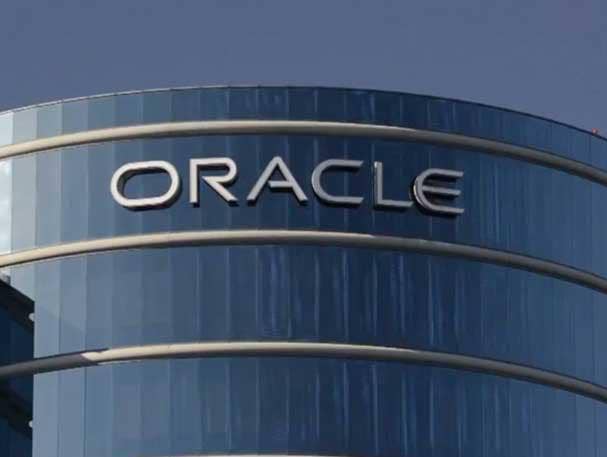Oracle Q3 Earnings: 5 Things To Know
Oracle continues to assert that its technology beats that of cloud’s big three of Amazon Web Services, Microsoft and Google Cloud.

Oracle’s continued assertion that it outpaces cloud’s big three in technological ability not only in cloud but in artificial intelligence was one of the highlights of the vendor’s latest quarterly earnings report.
“Our network is much faster than the other guys’ network,” Oracle co-founder and Chief Technology Officer Larry Ellison said on the Austin, Texas-based vendor’s quarterly earnings call Thursday – covering the quarter ended Feb. 28.
“We can create these groups of GPUs,” he said. “We can marshal them together. The other guys can’t do that. They can build clusters, but they actually literally are physically building a new cluster. They’re building new hardware. Our existing hardware, standard network, allows us to group these things together dynamically—these GPUs together dynamically to attack AI problems. No one else can do this.”
[RELATED: Oracle’s Ellison: Health-Care AI ‘More Important’ Than ‘Very Cool’ ChatGPT]
Oracle 3Q Earnings
CRN has reached out to Amazon Web Services, Microsoft and Google Cloud – the No. 1, No. 2 and No. 3, respectively, in cloud computing by market share – for comment.
Here’s what else you need to know from Oracle’s quarterly earnings call.

Oracle’s AI ‘More Important’?
Although content-generating tools such as ChatGPT and Dall-E have captured much of the artificial intelligence hype wave this year, Oracle executives assert that their AI developments are arguably “more important.”
Text-generating ChatGPT and image-generating Dall-E—both created by OpenAI, which has a multibillion-dollar investment from Oracle rival Microsoft—don’t have the same weight as Oracle’s AI systems for cancer, wellness, heart disease and other complex health care subjects, Ellison said on Thursday’s quarterly earnings call.
“People talk about ChatGPT being really cool because it can write my high-school essay for me,” Ellison said. “Well, how about reducing hospital readmissions at MD Anderson by 30 percent? You decide which is more important. … And GPT is very cool. There are other applications other than generative language in these large language models.”
His comments bring to mind those of IBM CEO Arvind Krishna when discussing his company’s role in AI. While Microsoft and Google compete for consumer attention, IBM is innovating in the areas of automation and business use – “real enterprise AI,” as Oracle CEO Safra Catz called it on Oracle’s call.
“If you can automate the drive-thru and order taking for quick-serve restaurants, that’s an example of what can happen,” Krishna said on the latest IBM earnings call. “If we can get deflection rates of 40, 50, 60 percent at everyone’s call centers, that’s a massive operational efficiency for all of our clients. If we can help retirees get their pension through interacting with a Watson-powered AI chatbot, that is an enterprise use case where all of these technologies come into play. By the way, all my three examples are real clients, where we are resulting in anywhere from hundreds to thousands of people, the efficiency, for each of these clients.”

AI An Oracle Business Opportunity
Still, the embrace of AI overall has been a boon for Oracle, Ellison said.
“There’s actually more demand for AI processing than there is available capacity,” he said. “And we’re short. We are expanding as fast as we can. It’s really interesting. It’s an exciting opportunity. But it’s challenging when there’s more demand than supply.”
Oracle also incorporates AI and automation into its regular offerings, including Oracle Cloud Infrastructure (OCI) data centers and the Oracle Autonomous Database, he said.
Oracle Fusion and OCI customers have had access to AI that shortens book closing to days from weeks, provides more relevant sales leads and improves security, Catz said on the call.
“Given our scale and our information advantage across industries and technologies, we are constantly training our applications to do more for our customers, whether it’s further automating processes, providing critical and timely recommendations, offering insight … or flagging potential issues,” she said. “That’s real enterprise AI. It’s what customers are looking for. It’s designed into everything we do.”

Oracle Different Than The Hyperscalers
Ellison made his familiar arguments of besting the big three of cloud computing when it comes to speed and architecture – if not when it comes to market share.
Ellison said that Oracle is actually “way ahead of the other hyperscalers in terms of our network and our ability to do AI.”
AI companies have come to Oracle because of the vendor’s ability to dynamically create clusters of GPUs, he said.
“They run their workload and the moment their workload is through running, we can reallocate that cluster or break that cluster up and allocate it to other users,” Ellison said. “The other guys can’t do that … can’t do it dynamically.”
Ellison said that Oracle’s Gen 2 Cloud differs from the clouds of hyperscalers Google, AWS and Microsoft with its non-blocking remote direct memory access (RDMA) network.
“Our network is much faster than the other guys’ network,” he said.
“We can create these groups of GPUs. We can marshal them together. The other guys can’t do that. They can build clusters, but they actually literally are physically building a new cluster. They’re building new hardware. Our existing hardware, standard network, allows us to group these things together dynamically—these GPUs together dynamically to attack AI problems. No one else can do this.”
Ellison said that another differentiator for the vendor is the ability to build dedicated regions instead of moving customers to a public cloud.
“We build these clouds for banks—huge industries moving to the cloud in a slightly different way than other industries,” he said. “Not moving to public cloud, but rather preferring to have these dedicated regions. So it’s just their applications in this cloud. We have the ability to do that. Again, Amazon does not. And Microsoft does not. And Google does not.”
CRN has reached out to Microsoft, Amazon Web Services and Google for comment.

Navigating The Economic Downturn
At least two investment firms had positive comments on Oracle’s performance.
A Friday report from KeyBanc noted Oracle’s “strong” 28 percent organic revenue growth year over year for cloud and “steady” database growth of 3 percent year over year.
“We continue to view Oracle as an attractive defensive name in an uncertain macro with strong growth in backoffice SaaS, high growth in OCI off a small base with potentially large and increasingly strategic wins, and steady DB growth,” read a Friday report by KeyBanc Capital Markets.
A Friday report from AllianceBernstein called Oracle’s quarter “one of the best we’ve seen from software recently, in line with our thesis that it should be the top pick for a recession.”
“Oracle beat where it matters most (cloud and margins) and guided to a strong Q4 (especially in Cloud) while many of its peers have recently come out with conservative guides in the face of macro,” according to AllianceBernstein. “The strength of the quarter and the guidance continues to prove how well positioned Oracle is to weather the economic turbulence successfully.”
AllianceBernstein notably downgraded Oracle rival Salesforce in January to “underperform.”
“With the tailwinds from M&A no longer enough, core markets approaching cloud saturation, competition increasing, and macro issues hitting growth, management is aggressively pivoting to driving margins,” AllianceBernstein said in January. “But the cuts are going to negatively impact efficiency, growth, and customer/employee satisfaction. Margin improvement will be less than expected in our view, and will appear over multiple years.”
After Salesforce’s latest quarterly earnings report this month, the investment firm issued a report praising Salesforce results, but pointing out that “this was delivered in conjunction with about 50 percent decrease in the revenue growth rate for FY24 and after numerous news articles of unhappy employees.”

Will Cloud Investment Hurt Margins?
Still, even if Oracle is surviving economic turbulence, KeyBanc noted that the capital expenditure demands for Oracle to continue ramping up its cloud abilities will squeeze its margins.
KeyBanc expects $2 billion to $2.5 billion a quarter in capital expenditures for Oracle through the first half of fiscal year 2024.
The amount of spending expected from Oracle factored into a Friday report from Societe Generale moving Oracle’s stock from buy to hold, according to Seeking Alpha.
The analyst said that Oracle efforts to scale the cloud business could cut into top-line growth.